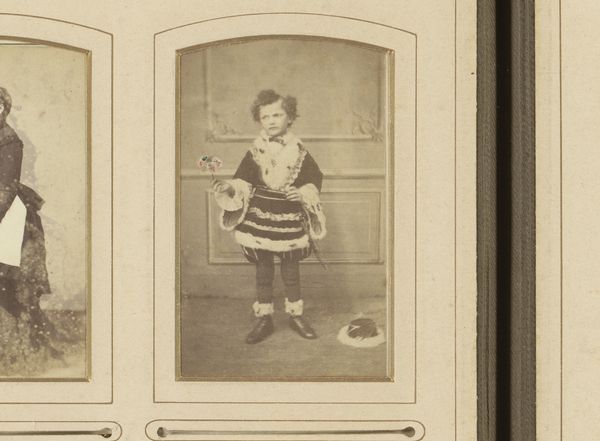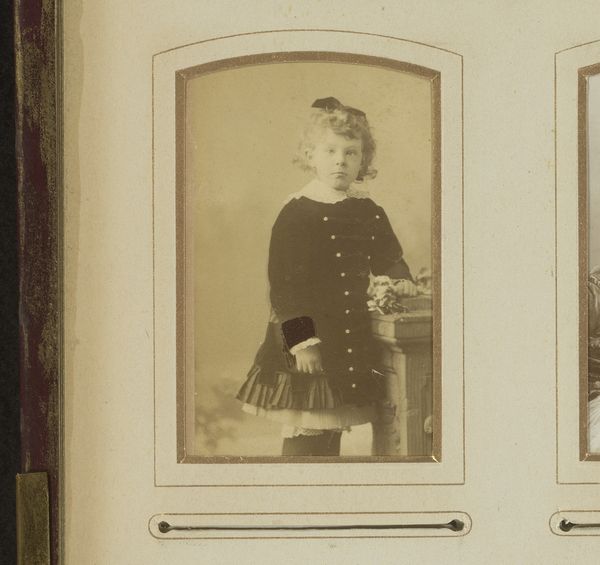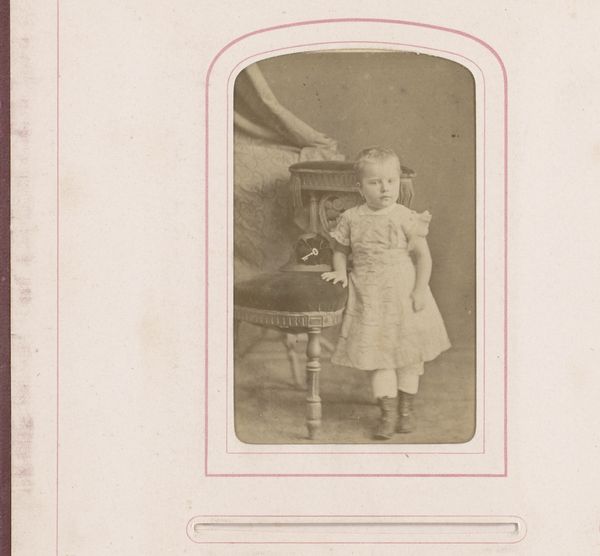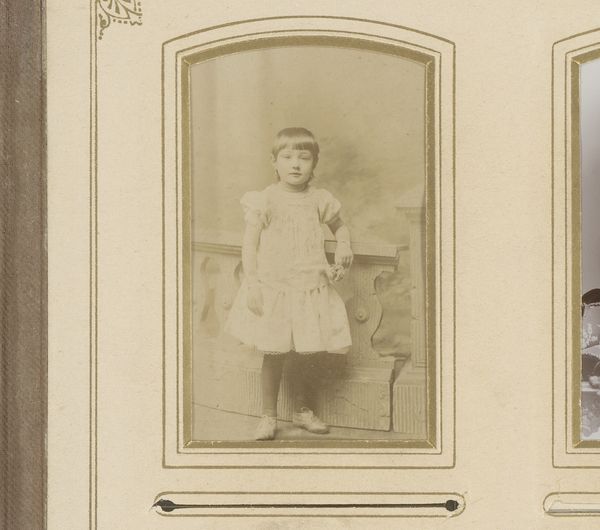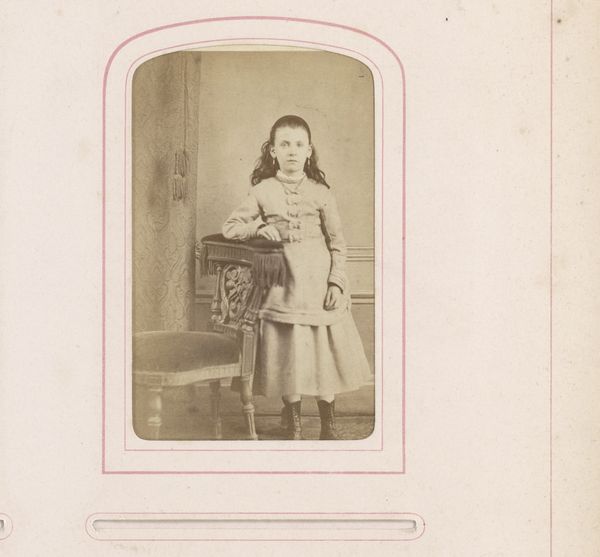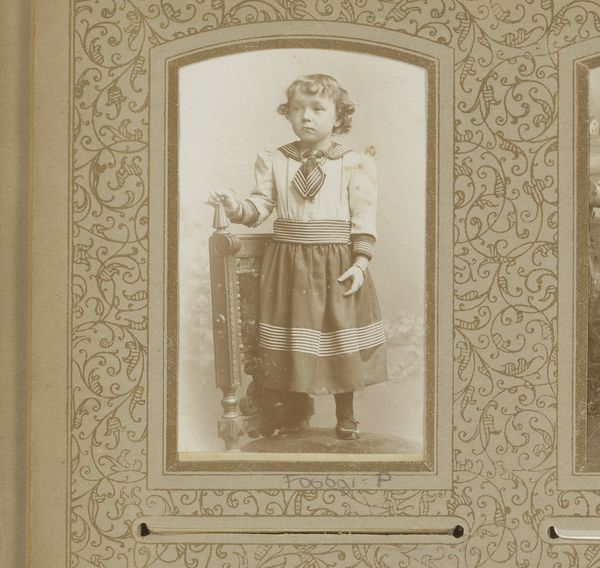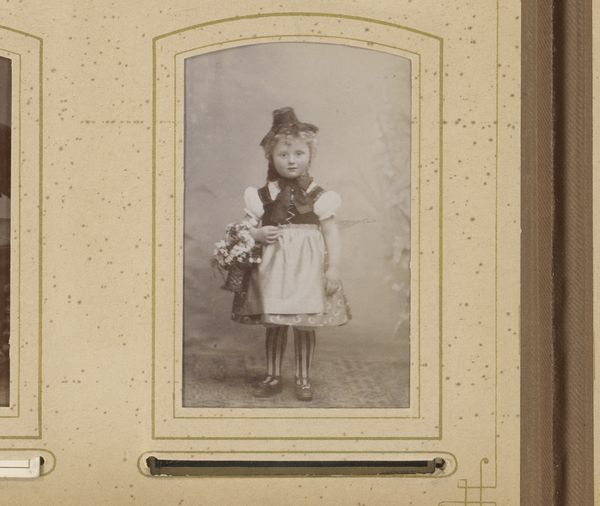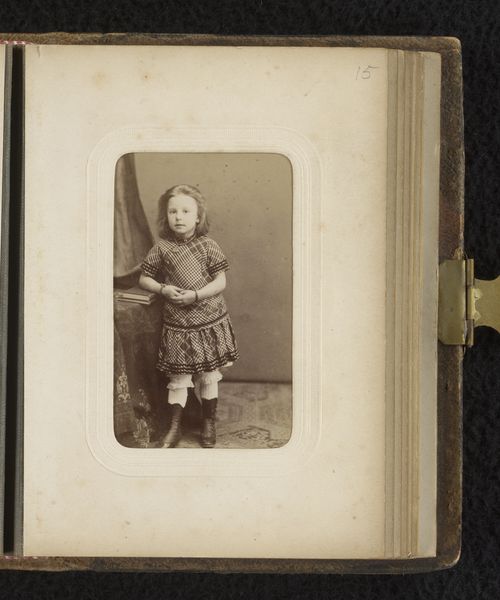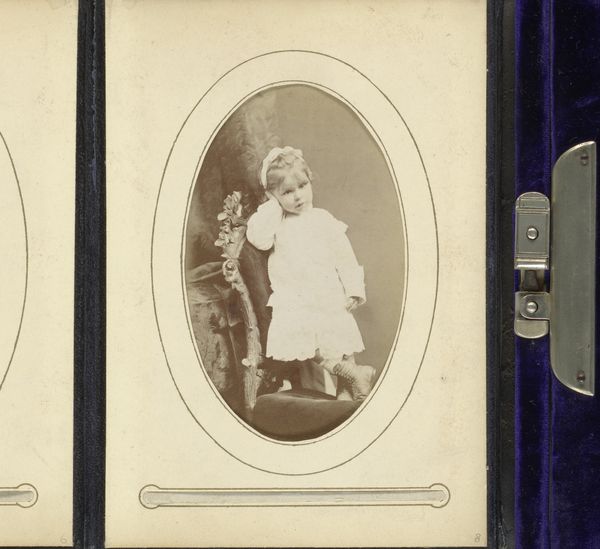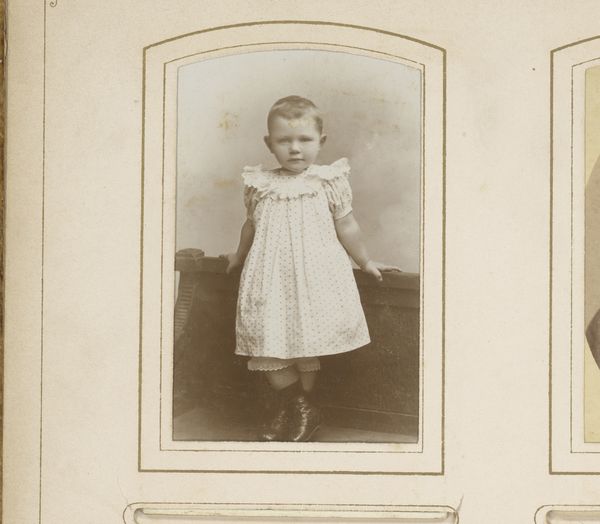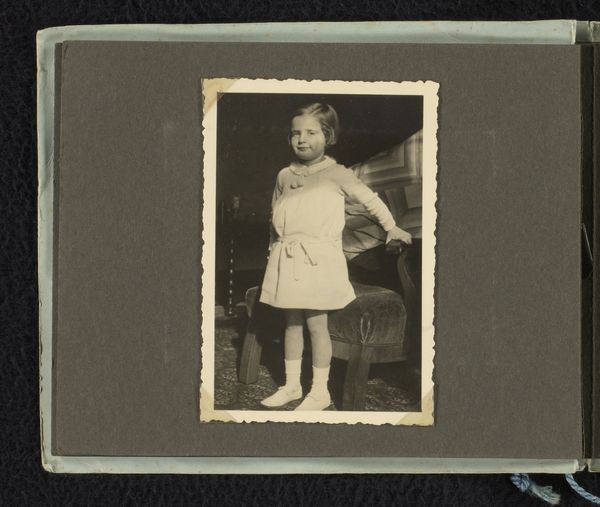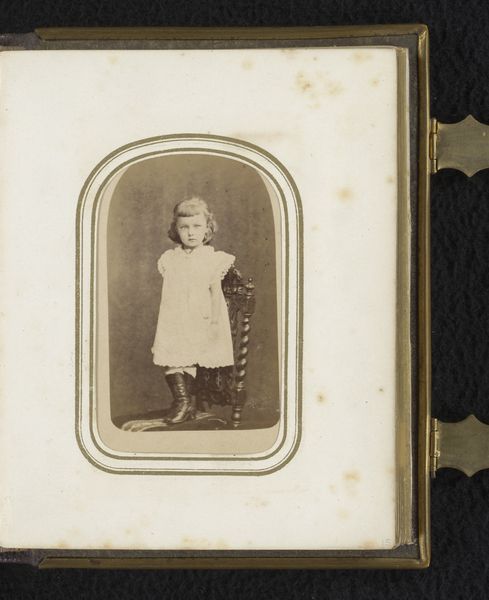
photography
#
portrait
#
photography
#
19th century
Dimensions: height 85 mm, width 51 mm
Copyright: Rijks Museum: Open Domain
Curator: This is a portrait photograph, titled "Portret van een meisje," which translates to "Portrait of a Girl." The image, created between 1892 and 1900, is by J. Diamant, utilizing the photography medium, in a portraiture style. Editor: I’m immediately struck by the formality and stillness in this image. The girl’s dark, polka-dotted dress, accentuated by that stark white lace collar, hints at a meticulously constructed social tableau of the time. There's a sort of rigid expectation, a carefully maintained facade. Curator: Yes, the material elements contribute significantly. Consider the photochemical process involved in creating this type of photograph; the way the light would have been manipulated. The clothes, especially her dress are also relevant to that process: fabrics that held up in photographic contexts of that era were heavily traded as a result of photography. Then, of course, there's the labor involved in her clothing design. The lace collar especially is highly crafted. Editor: Exactly! And we should acknowledge the performative aspect as it pertains to gender and childhood in the late 19th century. Look at her posed with a small basket of flowers. It is very suggestive. Was it acceptable or commonplace to use a child in this manner, and how do such portraitures frame her existence, her position in society? How complicit was this child in its making, being as the photograph features her form and likeness? It makes you wonder. Curator: I agree. And let's not forget the economic element. Having one's portrait taken during this period, involved time, studio space, and resources like set-decoration (consider the marble-top pedestal) as an affirmation of one's status. How photography contributed to material culture of its era needs to be acknowledged here too. Editor: The fact that this is a photographic "portrait" is key here; portraiture historically reserved for nobility is now accessed through relatively inexpensive and readily available new technology. What sort of statement did this accessibility imply regarding middle-class family values, perhaps? Curator: These details matter! Analyzing the photograph like this shows just how complex the relationship between commerce, society, technology, and representation was at this time in history. Editor: Definitely; examining how art reproduces or confronts existing political power structures opens us to understanding its historical moment better. This conversation offers more than just appreciating art, it enables us to dissect social constructs and engage critically with photography’s profound historical implications. Curator: It does. Through acknowledging both the visual and the material realities of this image, our appreciation becomes layered.
Comments
No comments
Be the first to comment and join the conversation on the ultimate creative platform.
